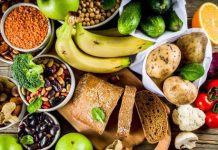Food courts have become a common feature of most malls around the world. With their variety of food options, affordable prices, and convenient locations, food courts are a popular choice for shoppers looking for a quick bite to eat. However, like everything else, food courts also have their share of pros and cons.


Pros-
Variety of Food Options
Food courts are known for their variety of food options, which is one of their biggest advantages. Food courts typically have multiple stalls or vendors offering different types of cuisine, ranging from fast food to ethnic food.
This variety allows shoppers to explore different types of cuisine and satisfy their cravings for a particular type of food. Some food courts even have healthy food options, such as salads and smoothies, for those who are health-conscious.
Additionally, the variety of food options in a food court makes it an ideal choice for groups of people with different food preferences. For example, if one person wants Chinese food, and another person wants pizza, they can both find what they want in a food court without having to go to separate restaurants.
Affordable Prices
Another advantage of food courts in malls is that they generally offer affordable prices. This is because food court vendors often have lower overhead costs compared to standalone restaurants. They share common seating areas, have smaller kitchen spaces, and don’t have to worry about marketing and advertising expenses as much as standalone restaurants do.
This cost savings is often passed on to the customers in the form of lower prices. Shoppers can enjoy a meal or snack at a reasonable price, making it an attractive option for budget-conscious individuals and families.
Convenient Location
Food courts in malls have a convenient location, which is another advantage. Malls are often located in central areas, making them easily accessible to shoppers. Moreover, food courts are usually located near the mall entrance or in a central location within the mall.
This makes it convenient for shoppers to grab a meal or snack while they are already at the mall. In addition, food courts are also located near other amenities and services within the mall. For example, they may be near the movie theater, arcade, or children’s play area. This can be especially convenient for families with children who want to grab a quick meal or snack before or after an activity.
Ideal for Large Groups
Food courts in malls are an ideal choice for large groups, which is another advantage. With multiple food vendors in one location, each person in the group can choose what they want to eat from different food stalls. This can help avoid the conflict that can arise when a group wants to eat at a specific restaurant that may not appeal to everyone in the group.
Additionally, food courts have a large seating area that can accommodate large groups. This makes it easier for everyone to sit together and enjoy their meals. The seating arrangements are usually communal, allowing people to socialize and interact with others in the mall.
Quick Service
Another advantage of food courts in malls is the quick service. Food courts typically have a fast-paced environment, with vendors preparing food quickly and efficiently. This makes it an ideal option for shoppers who are short on time or want to grab a quick bite before continuing their shopping.
In addition, food court vendors often have a pre-prepared food display, which allows customers to see what they are ordering before they order it. This can help speed up the ordering process and ensure that customers get their food quickly.
Cons-
Crowded Environment
One potential disadvantage of food courts in malls is the crowded environment. Food courts can be noisy and busy, especially during peak hours or holidays, which can be overwhelming for some people. The crowds can make it difficult to find a seat, and the noise level can be uncomfortable for those who prefer a quieter dining experience.
Additionally, the shared seating arrangements in food courts mean that customers may have to sit next to strangers or share tables with others, which can be uncomfortable for some people. It can also be difficult to have private conversations or work in a crowded and noisy environment.
Limited Menu Selection
Another potential disadvantage of food courts in malls is the limited menu selection. Although food courts offer a variety of food options, the menu selection at each vendor is often limited. This means that customers may not be able to find exactly what they are looking for, or they may not be able to find a vendor that meets their dietary restrictions or preferences.
Additionally, the limited menu selection may also mean that the quality of the food is not as high as at standalone restaurants that specialize in a particular cuisine. Food court vendors may have to prioritize speed and efficiency over quality to keep up with the demand and prepare food quickly.
Quality of Food
The quality of food in food courts in malls can be a potential disadvantage. While food courts offer a wide range of food options, the quality of the food can vary widely. As food courts often cater to the masses, the quality of the food may not be as high as a standalone restaurants that focus on a particular cuisine.
Moreover, food court vendors may have to prioritize speed and efficiency over quality to keep up with the demand and prepare food quickly. This can result in food that is not as fresh or flavorful as what is served at standalone restaurants. Additionally, the turnover of food can also be a concern. Some food vendors may leave food sitting out for extended periods, which can affect its quality and safety.
Unhealthy Food Options
Another potential disadvantage of food courts in malls is the prevalence of unhealthy food options. While food courts offer a variety of food options, many of them may be high in calories, sodium, and unhealthy fats. This can be a concern for those who are trying to maintain a healthy diet.
Moreover, food court vendors may focus on offering fast and convenient food options rather than healthy ones. This can lead to a lack of healthy options, making it challenging for those who are looking for healthier choices. Additionally, the portion sizes at food court vendors are often larger than what is considered a healthy portion, which can contribute to overeating and weight gain.
Lack of Ambiance
Another potential disadvantage of food courts in malls is the lack of ambiance. Unlike standalone restaurants that often have a unique atmosphere and decor, food courts in malls are typically utilitarian spaces designed for convenience and efficiency.
Also read: Things to Consider When Looking for An Italian Restaurant in Dubai
The shared seating arrangements and lack of privacy in food courts can also contribute to a lack of ambiance. The noise level and crowds can make it difficult to relax and enjoy the dining experience. Moreover, the quick service nature of food courts can make it difficult for customers to have a leisurely dining experience. Customers may feel rushed to finish their food and leave to make room for others.
















